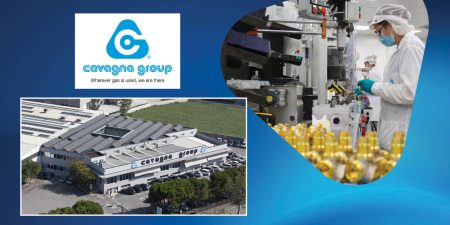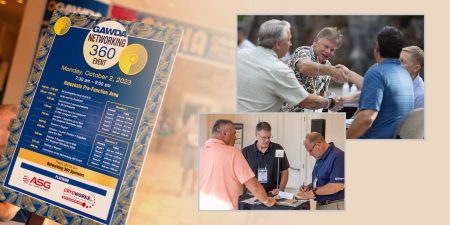The GAWDA gavel will pass, once again, at the conclusion of the 2024 Annual Convention in Phoenix. Indiana Oxygen President Gary Halter will hand it off to his neighboring state colleague, Eric Wood of O. E. Meyer.
In 2024, GAWDA debuted a new Technology Committee. This committee was commissioned to recognize an enormous change that will challenge the very existence of a business model that has successfully served our membership for more than 75 years. Digital Technology touches everyone’s life in just about everything we do. It’s no surprise, therefore, that our conduct of business MUST adapt to operating in all phases of the Digital Community. The introduction of the Technology Committee, with seats occupied by some of the industry’s youngest and brightest generational leaders, will offer vision into the manner in which our supply chain vertical will conduct business going forward.
It’s hard to believe that ten years have passed since many among us were trying to understand what the “millennial phenomenon” was going to mean to our business. Those “entry-level kids” are now guiding our decisions, running our businesses, and thankfully so, as their vision and skill sets have enabled our survival.
Gary and Eric are joined by many other volunteers who offer their talents and time to sit on many Boards and Committees doing the yeoman work that drives the Association’s success. These are demanding and time-consuming tasks that could not be tackled without these willing participants. We owe them our endless gratitude.
Without losing sight of our purpose – to efficiently DISTRIBUTE and otherwise MANAGE the products and services of the manufacturers we represent – our respective companies’ leaders must first understand the business priorities of our suppliers. Two scenarios are crystal clear. First, our gas manufacturers realized some time ago that independent distributors are much better at distributing molecules and their packaging. Their concentration is in producing the gases and “selling out” the plant. They recognize that their stakeholders can be better served by becoming more intimately involved in working with energy producers to develop and perfect affordable, clean energy sources and the accompanying logistical mechanisms. Some ASU owners and CO2 Primary Stream sources have engaged with distributor owners or ESOPS with equity arrangements.
As important is understanding challenges equipment and hard goods suppliers face in competing in the “SKU World.” It’s all about CONNECTIVITY, CONTENT, and COMMERCE. Nearly everyone buys something online. It’s one thing when it’s a pair of sneakers. It’s entirely different when a business decides that digital relationships become the OVERWHELMING choice of conducting business.
So, how have our new generation of leaders prepared? First of all, they are MASTERS OF THE TOOLS! It got started when their parents filled their cribs and strollers with electronic TABLETS and TOYS. From those days forward, they clutched on to those toys/tools wherever they travelled – at the meal tables at home and in restaurants, in school rooms, at every event imaginable, and in the sweaty hand or hip pocket with every step. Their TOYS became the life blood of everything “CONNECTIBLE.” Try running a business today with a pencil and a day timer! Every step along their educational path introduced new features of collecting and using DATA. In real time, they learned how to research and buy everything conceivable online. As the world expanded to everything digital, they were in lock step with every new development.
Yes, the “cream rises to the top.” The brighter, more serious, and those with visions into the future, prioritizing their respective goals, and we are truly fortunate as an industry to see them ascend to the leadership roles.
Many will say that if one prepares and works hard, success is just around the corner. But, in the surrounding of their presence in the gas and welding distribution vertical, this next generation have been exposed to a little bit of luck! Our industry’s incredible network of sharing and camaraderie creates a learning and experience platform that is far from universal. The transformation in succession is anchored by willingness to share experience across the spectrum, and our rising generational class are taking full advantage of the experiences shared by their mentors. The phrase is probably overused, but “IT IS WHO WE ARE!”
With a foundation in practical, industry specific skill sets, and experienced, willing mentors to share experiences; what has worked, and what has not; our able successors must seriously address Supply Chain Alignment.
The fact that we exist in a Distribution Supply Chain demands that we fully understand the driving forces and priorities of the manufacturers and suppliers we represent and the users of the products and services we provide. Those priorities CHANGE over time, are not necessarily in sync, and we – in the middle – must figure out how to bridge the differences. Complicating our approach and solutions is the fact that we must accommodate distinct differences in managing today’s gases related products and those generally described as hard goods. Differences in packaging and logistics are significant factors.
Successfully aligning with the peculiarities of each classification requires that we are ambidextrous. Our predecessors found it easy to place a couple of gas cylinders on the same truck delivering a few boxes of welding rod to a customer preferring a single source for such a product mix. Our advertising in Yellow Pages called out “One Call Gets It All.” NOT IN TODAY’S WORLD!
Our gases suppliers have discovered, over many years, that their distributor partners are far more efficient in managing distribution of the varieties of the gases themselves, as well as the packaging required. Once the distributor has possession of the molecules, the manufacturer is relieved of that responsibility; free to concentrate on more pressing priorities. Today, the distributor can recognize the user’s needs, recommend the solution, plan and install the storage and distribution systems, establish replenishment protocols, monitor data in real time and manage transactions seamlessly with total accuracy.
Operating in the hard goods arena is entirely different – yet in the case of many of our distributor companies, revenues from this phase of the business are essential to the business’s success. Competition not only exists from an assortment of alternate channel players – MRO, PPE, Contractor Supplies, JanSan, Chemical, Consolidators, and on and on, but from our own suppliers realizing that they must have a viable direct presence in the online World. In fairness to their stakeholders, they MUST have a branded web page, quality content, connectivity, functionality, and an active ecommerce presence.
Our new generation of leaders also understand that we are no longer in a “show and tell” business model. Relationship selling, which supported us for many years, is only an element of the total Enterprise Relationship that must exist within the Supply Chain. The expanded relationships include many types of consultive services – applications recognition, solutions recommendations, demonstrations, installations, training, supporting, maintenance and repairs, tool crib/supply room management, and Continuous Improvement support, as well as all sorts of predictive analytics, VMI, EDI/Punchout fulfillment, and seamless transactional capacity and accuracy. Much of this connectivity is ERP to ERP without human intervention. We must now have a presence at every touch point in our business relationships to guarantee exceeding the expectations of all of those in direct interface with us.
A quick look around the room at a GAWDA gathering clearly validates that the Class of our Generational Successors are present, eager, and up to the challenge. Our network Is intact, and spirits high.
BRING IT ON!










